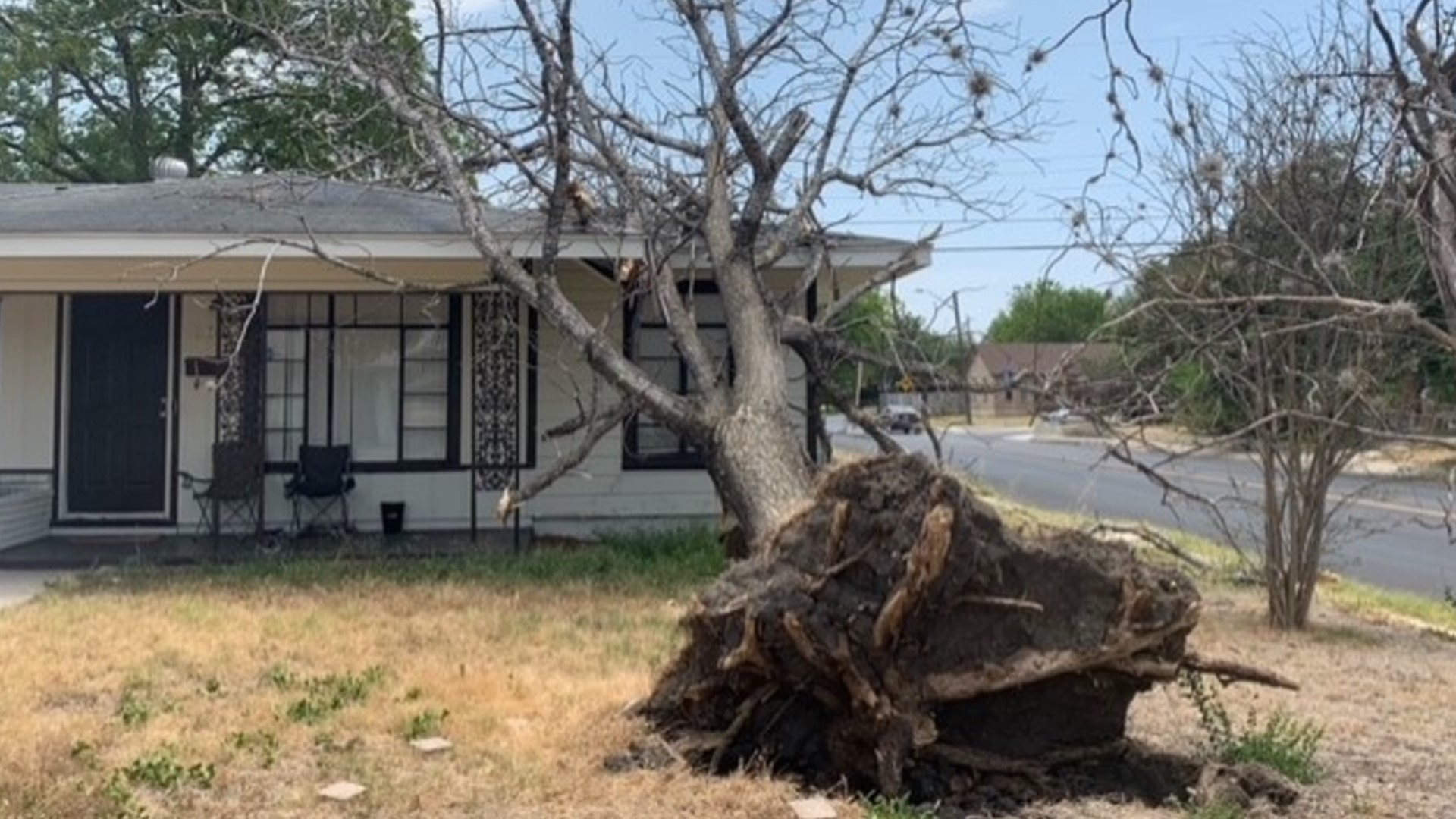SAN ANTONIO — Everywhere you look around town, the trees we love are showing signs of heat and drought stress.
Many have lost the battle for survival that started during the terrible winter storm last February.
But with Stage 2 water restrictions in place, tree care experts say there are simple things you can do to help save the shade.
Mark Fanick's family has been in the nursery business for generations.
"We're in a bad drought, Fanick said. "It's not the first time but it's one of the longest times I've seen where we've had zero to little rain in five months."
Last year, Fanick said, we had shallow rains that didn't do much for the long-term survival of deep-rooted trees.
"Everything stayed green but down below where we needed to be watering at 12 to 24 inches, we didn't have water down there so this has been a really tough year for plants because there are really no reserves down below," he said.
I's also important to know how to water.
"You need to move to north, south, east and west of the tree. Think of it as a pie, you have to cover all areas, the roots run in all directions," Fanick said.
Fanick said the freeze first and now the drought has been a double blow.
"Plants are weak, just like people, they wear down and they get ill and then diseases set in. It's like brittle bone, almost and so some trees are falling over from it. Some trees are losing leaves. Some are sunburned, scorched. It's really just survival of the fittest," he said.
Certified arborist Gerzson Nyiri of Knotty By Nature Tree Care said since trees can't talk, property owners need to be paying careful attention to the condition of their trees.
"When the leaves go from their rigid strong, normal shape to a wimpy sad drooping, that's when you need to water," Nyiri said, adding some trees can be facing internal issues like fungus that aren't immediately apparent. He said leaf drop, when leaves turn brown and fall is another sign of trouble.
Nyiri said one way to help trees in the high heat is to make sure their feet have plenty of shade. He suggests adding a thick layer of mulch, not around the trunk, but all the way out to the drip line.
"It regulates the soil temperature and works as a great sunscreen for all of the plants and all of the other things like beneficial bacteria and fungi that live in the soil that work in relationship with the tree," Nyiri said. "It all helps stave off the stress that will lead to a tree's death."
The agricultural experts at Texas A&M have extensive advice on saving trees.
Stay informed on drought conditions here.
To contact a certified arborist, visit this site.
With regard to trees in city parks, a spokesperson said the city is facing the same water restrictions as private property owners with regard to watering issues, but they are keeping a careful eye on conditions.
They provided the following statement on tree management:
The City's Parks and Recreation Department takes drought conditions very seriously. We understand there are both short-term and long-term affects of drought on our trees, shrubs and other plants throughout the City. Our Urban Forestry team pays close attention to the impacts that drought conditions have on trees in many of our parks, and when possible we employ the use of irrigation or watering trucks to provide additional water to these trees. However, the Parks and Recreation Department is bound by the same SAWS-issued watering restrictions as everyone else is in San Antonio during times of drought. Currently, San Antonio is under Stage 2 watering restrictions, which means that watering may only take place at certain designated times of the day once per week. The Parks and Recreation Department also recognizes that it is equally as important to protect our water resources along with our other natural resources. Fortunately, the majority of the trees in our Parks system are native tree species. Many of these native trees are drought tolerant, meaning they can withstand the impacts of a Texas drought in ways that non-native species might not be able to. Trees will, however, show signs of stress, and some may be forced to shed their leaves if the drought continues. We may even experience some canopy decline, but most of our native tree species should survive a lingering drought. Staff will continue to monitor the trees throughout our City parks and take appropriate action in an effort to continue to maintain the health and safety of park visitors.

